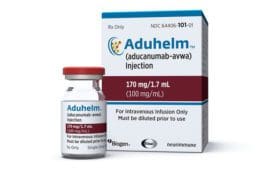
[Neuron image by Gerd Altmann from Pixabay]
Nature‘s Molecular Psychiatry published the analysis.
HCQ is a disease-modifying anti-rheumatic drug (DMARD) that can reduce pain and swelling associated with arthritis. It is also used to treat malaria and lupus.
The drug received substantial attention in the early days of the pandemic after it was hailed as a potential therapeutic agent for COVID-19 but later fell out of favor. The U.S. government eventually concluded that it does not benefit hospitalized COVID patients.
In the Molecular Psychiatry analysis, researchers concluded that the JAK/STAT pathway is a potential Alzheimer’s target. HCQ inactivates the STAT3 protein, possibly reducing Alzheimer’s pathogenesis.
They found that HCQ reduced Alzheimer’s risk compared to methotrexate in four separate analyses. HCQ also had a dose-dependent impact on long-term potentiation and restored impeded hippocampal synaptic plasticity before the substantial accumulation of amyloid plaques and neurodegeneration in APP/PS1 mice.
The researchers also showed that HCQ inactivated STAT3 in microglia, neurons and astrocytes. They argue it could thus potentially become a disease-modifying Alzheimer’s treatment.
A separate analysis published in BMC Psychiatry concluded that cognitive impairment is common in older adults with rheumatoid arthritis (RA) — especially in those with higher RA disease activity. In addition, the authors conclude that chronic systemic inflammation could accelerate cognitive decline.
Another analysis published in 2019 in the Annals of Rheumatic Diseases found no statistical association between Alzheimer’s and hydroxychloroquine use.
A study published in 2001 in The Lancet found no significant benefit from hydroxychloroquine in a placebo-controlled study focused on patients with early Alzheimer’s disease at 18 months.
The genesis of hydroxychloroquine dates back to the post-World War I era, when the German government had prioritized the development of new malarial therapies. Chloroquine was discovered in 1934. Its analog hydroxychloroquine was the subject of a 1949 patent from Sterling Drug.
Filed Under: Neurological Disease





Tell Us What You Think!
You must be logged in to post a comment.